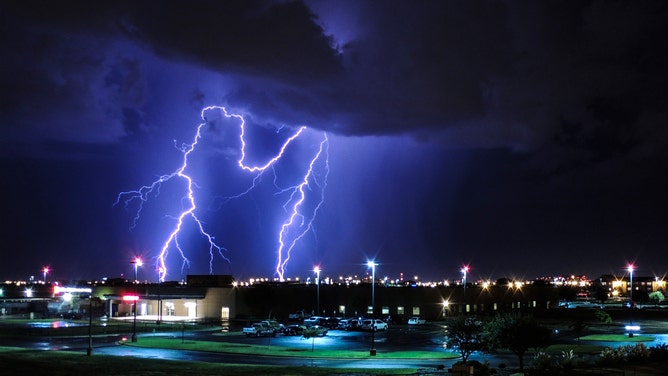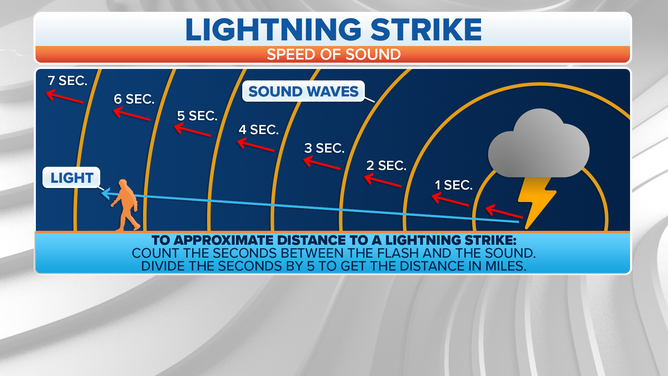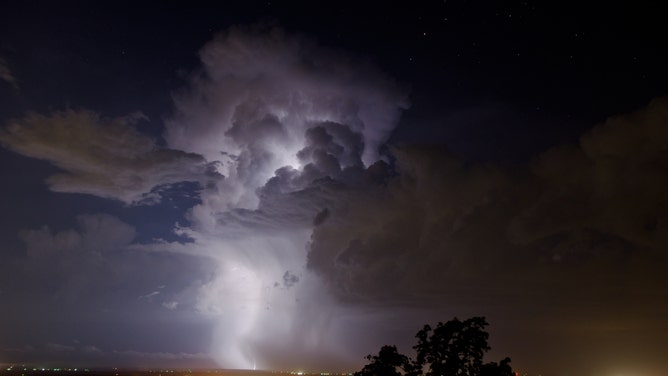Is 'Heat Lightning' or 'Sheet Lightning' a real thing?
Those who live or grew up in places where thunderstorms are common might have heard about distant thunderstorms described as producing "heat lightning" on a warm summer night, but heat lightning isn't a unique meteorological event.

Summertime storm and lightning strike overlooking Lubbock, Texas in 2014.
(Mitchel Coombs / NOAA)
Those who live or grew up in places where thunderstorms are common might have heard about distant thunderstorms described as producing "heat lightning" on a warm summer night.
Usually referring to lightning without thunder, there was some assumption that this was a different kind of thunderstorm than the typical booming variety — perhaps triggered by the day's heat?
But heat lightning isn't a unique meteorological event -- it's the same as regular lightning. The only apparent difference is that, in this case, the lightning is too distant for you to hear the thunder.
DEBUNKING 7 MYTHS ABOUT LIGHTNING
Lightning is bright enough it can be seen from any distance across the horizon -- even dozens of miles away if the horizon is flat enough and the storms are tall enough. But sound waves can only travel so far before they're scattered out by air molecules. The exact distance depends on the temperature and density of the air, but generally speaking, thunder can go about 10 miles before it dissipates to near inaudible levels.
On the other hand, lightning strikes have been known to travel as far as 25 miles from their parent thunderstorm, so there is danger in being struck by lightning "from the blue" without having any thunder cues that a storm is close or approaching.
LIGHTNING SAFETY: WHEN THUNDER ROARS, EVEN TAKING OUT THE TRASH CAN TURN DEADLY
Under normal circumstances, though, you can calculate the rough distance you from a lightning strike by counting the delay between seeing the lightning and hearing the thunder. Lightning moves at 186,000 feet per second -- essentially instantaneous on Earth's surface -- while sound waves move at about 760 miles per hour.
Thus for every 5 seconds delay between seeing lightning and hearing thunder equals 1 mile in distance. Thirteen seconds would equal 2.6 miles, and 19 seconds would be 3.8 miles.

(FOX Weather)
Sheet Lightning: Not really a type of lightning either
Along the lines of heat lightning, you also might hear about a report of "sheet" lightning, but a better term might be "hidden lightning."

Lightning bold hidden inside a cumulonimbus cloud in eastern Oklahoma.
(Charles Vann via NOAA)
Sheet lightning is when clouds or the nearby skies or area below the horizon light up in a flash, but you don't see the bolt -- as if a white sheet flashed in the sky instead.
IN A FLASH: LIGHTNING CHASER SHARES HOW TO CAPTURE NATURE'S FURY ON CAMERA
This is simply due to the lightning bolt being contained inside the cloud -- lightning can occur between two spots within the same cloud tower -- or perhaps the bolt is being hidden by another cloud or occurred below the horizon.
Again, they are regular lightning strikes; you just aren't seeing them in the traditional sense.